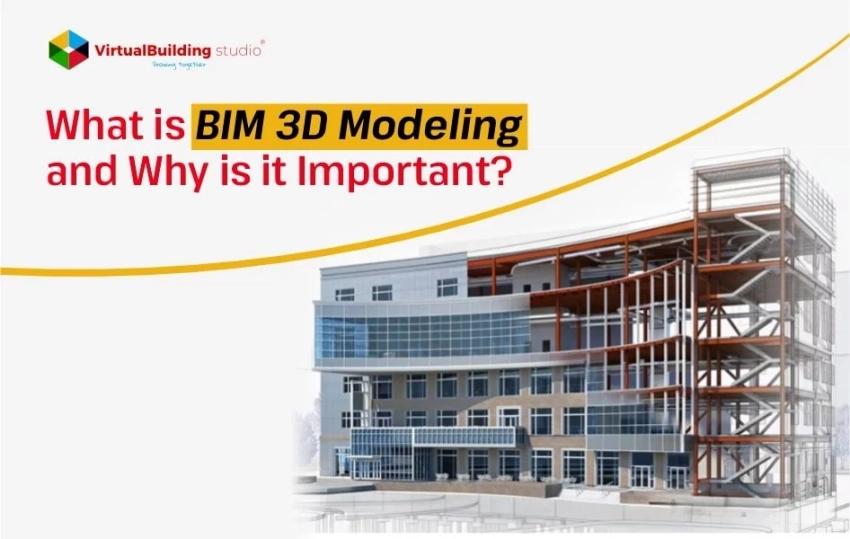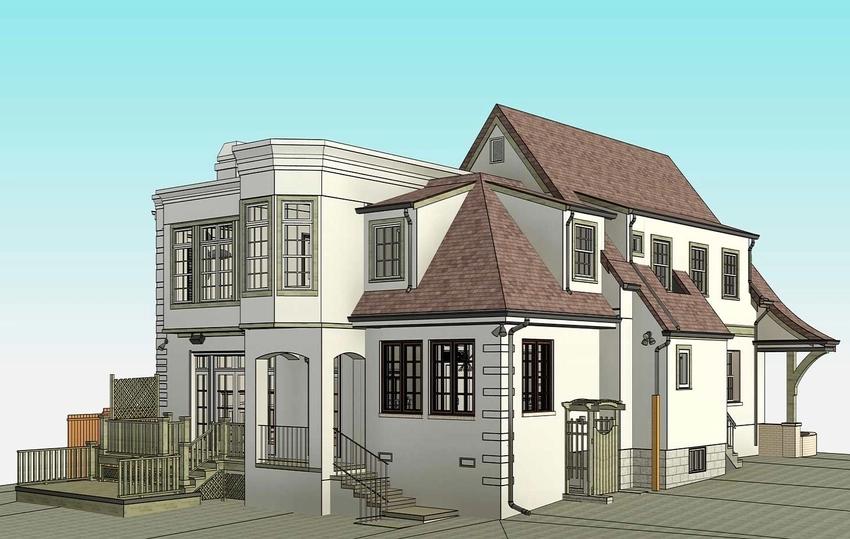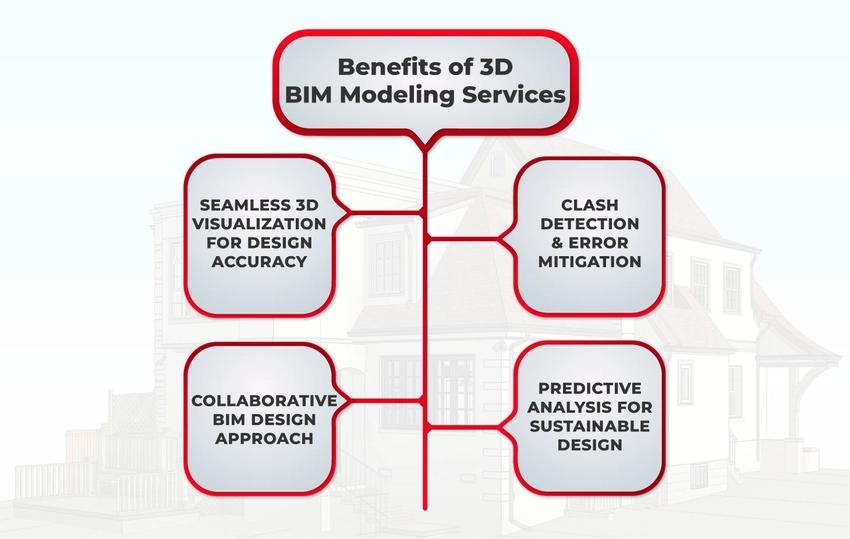
The AEC industry has evolved from traditional hand-drawn drafting to advanced CAD drafting services, paving the way for the next generation of design and construction technology, 3D BIM modeling services.
This cutting-edge BIM technology has become indispensable in today’s tech-driven construction industry, enabling precise architectural visualization, clash detection, and streamlined project coordination. As the industry embraces digital transformation, finding the best BIM outsourcing partner is crucial to achieving efficiency, accuracy, and scalability in design workflows.
Let us explore the world of 3D BIM modeling, from LOD-based modeling to structural BIM services, and discover how outsourcing can enhance cost-effectiveness, project accuracy, and seamless collaboration in the construction and engineering sectors.
What is BIM 3D Modeling?
BIM 3D modeling is the process of developing intelligent virtual models that incorporate detailed information about each component of a building lifecycle. This data-driven design approach has become the preferred choice for architects, engineers, and construction professionals due to its unmatched precision, accuracy, and efficiency.

The integration of BIM services can commence as early as the ideation phase, ensuring seamless collaboration between multidisciplinary teams. Through real-time updates and clash detection, all stakeholders remain informed of even the slightest modifications, enhancing coordination, risk mitigation, and project transparency.
Industry-leading platforms like Revit BIM modeling play a crucial role in quality control, facilitating design validation, cost estimation, and a smooth construction workflow, ultimately driving better decision-making and project success.
Why are BIM Modeling Services Important?
BIM 3D modeling is an evolving design methodology that continuously enhances efficiency, accuracy, and collaboration, making projects more streamlined and cost-effective.
With the rising demand for urbanization and increasingly complex architectural designs, engineers and designers seek advanced digital solutions that can tackle intricate construction challenges while delivering cost-effective, energy-efficient outcomes.
From conceptualization to facility management, Revit 3D modeling services as a foundational tool for design, construction, operation, maintenance, and monitoring, ensuring data-driven decision-making, reduced rework, and optimized project workflows throughout the entire building lifecycle.
4 Benefits of 3D BIM Modeling Services
3D BIM modeling services offer a transformative approach to design and construction, ensuring smooth planning, clash-free execution, and enhanced project efficiency.

Let us explore the key advantages of adopting BIM technology in your projects.
Seamless 3D Visualization for Design Accuracy
With 3D BIM modeling, architects, engineers, and contractors gain high-precision visualization of entire structures, from architectural layouts to MEP designs. This data-rich digital model allows stakeholders to analyze each detail and refine designs before construction begins.
Clash Detection and Error Mitigation
Industry-leading software like Revit BIM modeling identifies clashes and service overlaps at the planning stage. This proactive clash resolution minimizes on-site errors, reducing costly rework and ensuring a streamlined construction process.
Collaborative BIM Design Approach
BIM fosters real-time collaboration, offering a centralized data environment where multidisciplinary teams can access and update model information effortlessly. This ensures transparency, coordination, and informed decision-making throughout every phase.
Predictive Analysis for Sustainable Design
Highly detailed BIM models help assess a project’s environmental impact, offering insights into energy efficiency, sustainability, and surrounding infrastructure integration. This data-driven approach supports smart urban planning and eco-friendly construction solutions.
By embracing 3D BIM modeling, firms can unlock precision, efficiency, and innovation, redefining the future of digital construction workflows.
Best 3D Modeling and Rendering Software of 2025
Revit 3D BIM modeling software continues to set the industry benchmark in advanced design and rendering, making it one of the top BIM platforms of 2025. With its intelligent parametric modeling capabilities, Revit enables seamless collaboration by integrating architectural, structural, and MEP disciplines into a unified digital model.
Rather than managing multiple isolated files, design teams and contractors work within a single coordinated BIM environment, ensuring real-time clash detection, error-free planning, and optimized project execution.
What makes Revit BIM software the most preferred in 2025 is its hyper-realistic rendering features, powered by AI-driven visualization tools that enhance material accuracy, lighting effects, and environmental context. Additionally, its next-gen parametric design capabilities allow architects to push the boundaries of adaptive architecture and sustainable construction.
The AEC industry is embracing digital transformation, and Revit remains a critical tool for efficiency, precision, and collaborative design workflows. It ensures that AEC professionals stay ahead in an era of intelligent automation and smart infrastructure development.
How to Choose the Ideal BIM and Revit Outsourcing Partner?
As 3D BIM modeling services continue to gain traction in the AEC industry, selecting the right BIM and Revit outsourcing partner is crucial for ensuring efficiency, accuracy, and seamless collaboration in your construction projects.
Here are key considerations to keep you on track:
Expertise in BIM and Design Complexity
Opt for partners with proven proficiency in handling simple to complex BIM designs, ensuring precise 3D modeling, LOD-based detailing, and error-free construction documentation.
Technology-Driven Approach for Maximum Efficiency
Evaluate the level of automation and digital integration your outsourcing partner employs. Advanced tools such as AI-enhanced BIM workflows, automated clash detection, and cloud-based collaboration drive efficiency and reduce rework.
Clear Communication and Collaborative Teams
Transparency is key; ensure your outsourcing partner has well-structured teams, aligned with your business needs, enabling real-time coordination, seamless information sharing, and effective project tracking.
Cost Transparency and Financial Planning
Clarify cost structures upfront to avoid disputes during project execution. The right BIM service provider ensures cost predictability, helping optimize resources, budget allocation, and overall project ROI.
Future-Ready BIM Workflows with Revit
With advancements in Revit 3D BIM modeling services, the industry is shifting toward automated, collaborative, and sustainable design methodologies. This approach guarantees time and energy savings, setting a new standard for precision-driven architectural workflows.
Selecting the right BIM outsourcing partner can empower your construction and engineering projects with data-driven insights, smart coordination, and long-term scalability.
Conclusion
With the evolution of the AEC industry, BIM 3D modeling stands as a game-changer in design, construction, and facility management. By enabling accurate visualization, seamless collaboration, and data-driven decision-making, BIM fosters efficiency, cost savings, and sustainability across projects of all scales.
From conceptualization to long-term maintenance, BIM ensures precision in planning, early clash detection, and optimized resource allocation, making it an indispensable tool for architects, engineers, and contractors.
With platforms like Revit BIM modeling advancing automation and real-time coordination, the future of construction technology is undeniably intertwined with BIM innovation.
Embracing BIM 3D modeling is not just about digital transformation, it’s about ensuring better built environments, enhanced productivity, and resilient infrastructure that meet the demands of the modern world.
